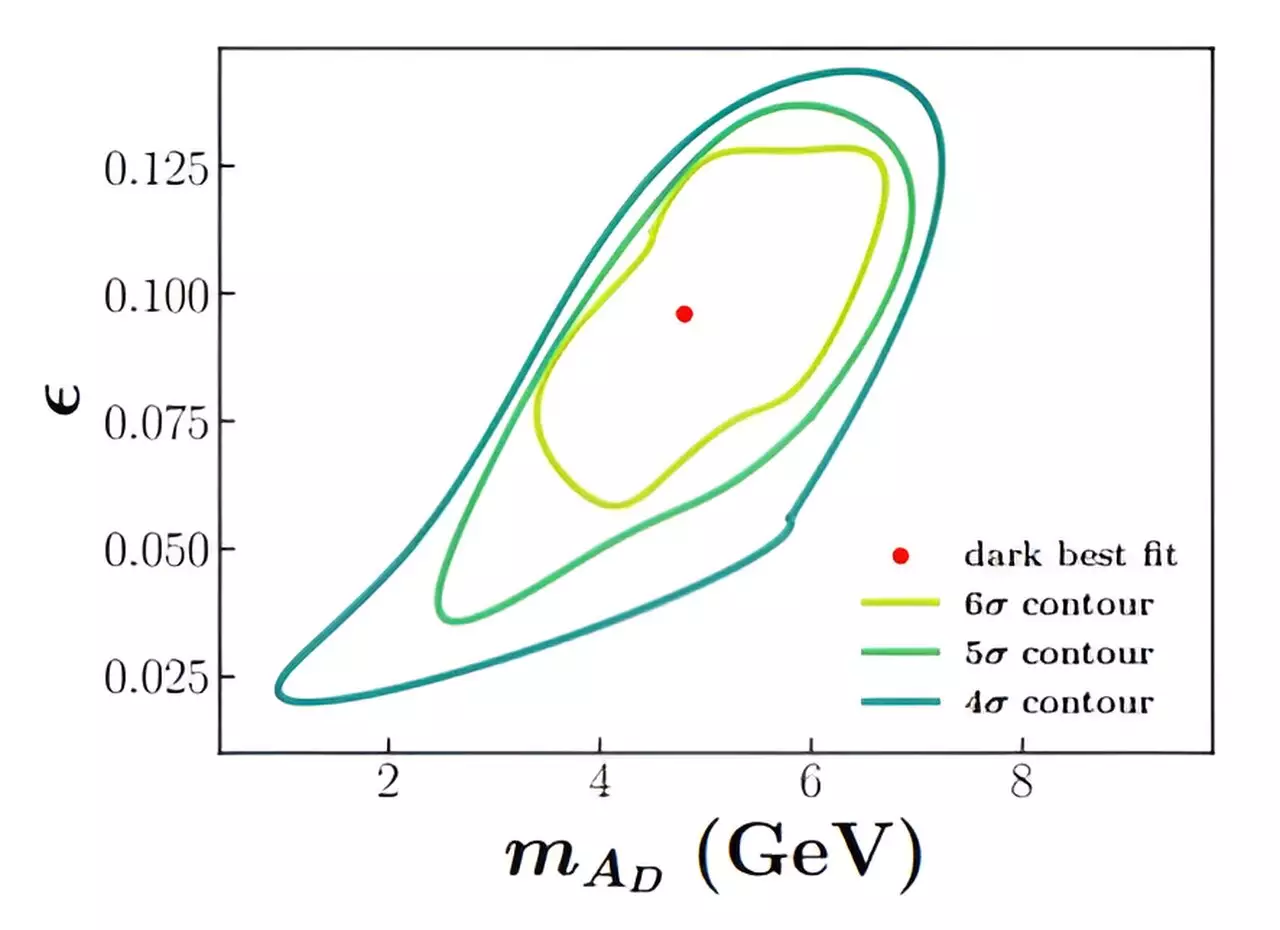

The quest for insights into the nature of dark matter has puzzled scientists for decades. Dark matter, which makes up 84% of the matter in the universe, remains a mystery despite the best efforts of physicists around the world. Professor Anthony Thomas, Elder Professor of Physics at the University of Adelaide, acknowledges the challenges scientists face in understanding this elusive substance. In recent research, a team of international researchers, led by experts at the University of Adelaide, has turned their attention to the potential role of a theoretical particle known as the dark photon.
Regular matter, which constitutes our physical world, is significantly less abundant than dark matter. The existence of dark matter has been firmly established from its gravitational interactions, but its precise nature continues to elude scientists. The dark photon, a hypothetical particle proposed as a force carrier similar to the photon of electromagnetism, has emerged as a potential key to unlocking the secrets of dark matter. This particle may serve as a portal between the dark sector of particles and regular matter, providing valuable insights into dark matter’s composition and behavior.
In their latest study, Professor Thomas and his colleagues, including Professor Martin White, Dr. Xuangong Wang, and Nicholas Hunt-Smith, members of the Australian Research Council (ARC) Center of Excellence for Dark Matter Particle Physics, explore the potential effects of the dark photon. The team focuses on the complete set of experimental results from the deep inelastic scattering process. Deep inelastic scattering is a process used to probe the internal structure of hadrons, such as protons and neutrons, using high-energy particles like electrons, muons, and neutrinos.
To investigate the role of the dark photon, the researchers use the Jefferson Lab Angular Momentum (JAM) parton distribution function global analysis framework. By modifying the underlying theory to accommodate the possibility of a dark photon, the team aims to uncover any deviations or patterns that may shed light on the nature of dark matter. These findings have been published in the Journal of High Energy Physics.
Deep inelastic scattering is a crucial tool in particle physics, as it provides valuable insights into the subatomic world and the fundamental laws of nature governing it. By analyzing the by-products of high-energy particle collisions, scientists can unravel the structure and behavior of subatomic particles. Through a comprehensive investigation of deep inelastic scattering, researchers hope to gather essential clues regarding the existence and properties of dark matter.
The study of dark matter poses several challenges for physicists worldwide. Its elusive nature, coupled with the scarcity of regular matter in comparison, makes understanding dark matter an arduous task. However, researchers like Professor Thomas and his team remain committed to pushing the boundaries of scientific knowledge. By exploring theories, such as the possibility of a dark photon, scientists strive to overcome these challenges and unveil the secrets of dark matter.
Unearthing the mysteries of dark matter is a fundamental pursuit for physicists. With the assistance of the dark photon, a theoretical particle that may serve as a bridge between the dark sector of particles and regular matter, scientists hope to gain valuable insights into the nature and behavior of dark matter. Through the analysis of deep inelastic scattering and the collaborative efforts of international researchers, the quest for understanding dark matter continues, bringing us closer to unraveling the secrets of the universe.
The world of medical therapeutics is on the brink of transformation thanks to an innovative…
Recent groundbreaking research published in *Nature* has unveiled a transformative aspect of tree biology that…
In an impressive stride for engineering and computational fluid dynamics, a team of researchers has…
The concept of starquakes—profound vibrations generated by the turbulent surfaces of stars—serves as an innovative…
In a stunning advance that promises to reshape cardiac treatment across the globe, researchers have…
In the battle against climate change, reforestation has emerged as a beacon of hope, particularly…
This website uses cookies.